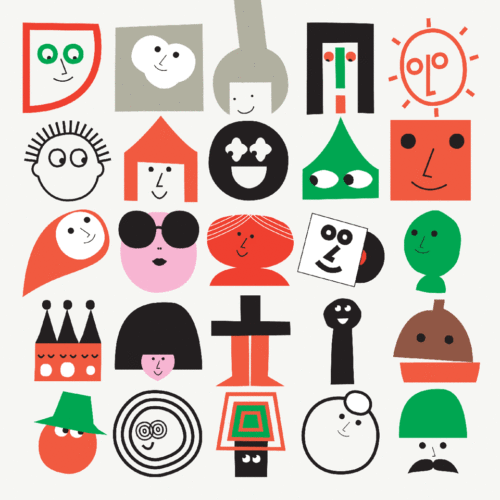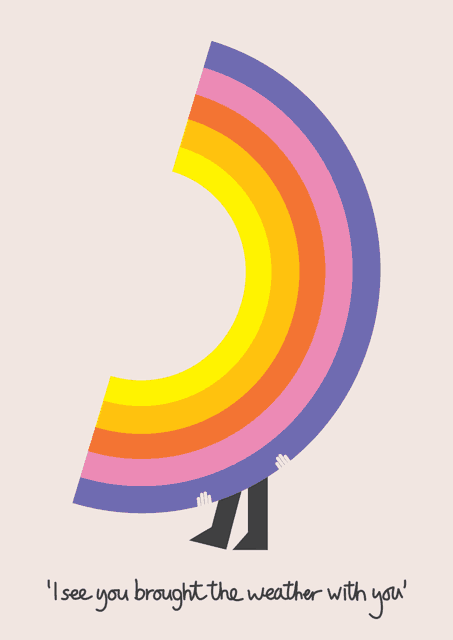Resta Aggiornato
Registrati alla nostra newsletter e resta aggiornato con le ultime novità di Illustrazioni Seriali. No Spam, promesso!

IS: Tell us something about how you started to draw, when you realized you wanted to work as illustrator and what did you study.
AG: I spent a year drawing on my foundation course at the Cambridge College of Art.
There were so many opportunities in and around the city to go with a sketchbook and I often took off early to draw the old colleges whilst it was quiet. We had some memorable life drawing classes and were fortunate to make regular visits to The Museum of Archaeology and Anthropology, The Museum of Zoology, The Fitzwilliam Museum and Kettle’s Yard House and Gallery.
Cambridge was followed by a BA(Hons) Graphic Design course at Maidstone College of Art in Kent where I had the good fortune to spend three great years with an eclectic bunch of talented artists, illustrators and designers.
IS: What would you suggest to young students who want to work as illustrators? Do you think it’s easy to find a job in the UK, or do you think it would be easier somewhere else.
AG: Work hard and fill those sketchbooks! I’d encourage all those starting out to think about what makes them tick, what makes them unique! We all look at the world in different ways and hold so many diverse opinions and inspirations. I’d make up a scrap book of sorts, a visual diary and realize these opinions by way of sketches, doodles, cuttings and writings. Sketchbooks are so important! We can refer back to them throughout our lives, they can often hold memories better than photographs and help us to revisit and re-invigorate projects.
I don’t think there’s a particular advantage to being in the UK although London is, of course, thriving and full of opportunity! I think illustrators are in a better position than ever to work remotely. Our lives have been made that much easier by that wonderful invention, the internet.
After graduating, I moved to London and started out as a junior designer at Vogue Magazine. I later became freelance and worked for Esquire, Cosmopolitan, Condé Nast Traveller, House & Garden, The Observer and The Independent weekend magazines amongst others. It’s only in the past 3 years since I moved to Bath that I began to work as an illustrator.
IS: You recently moved from London to Bath. How have nature and landscape inspired you in your works? Do you think it is more difficult to get clients living outside London?
AG: I wrote some footnotes on my first picture book for Corraini which read ‘He likes peace and quiet but lives and works in London’. It got to a point where the everyday bustle and noise of a big city become a distraction and since moving to Bath, I’ve become increasingly inspired and focused on my work through proximity to the countryside. I have the best of both worlds, I can venture into Bath one way or walk up onto an iron-age hillfort, Solsbury Hill in the other direction.
I don’t think it makes much difference to the client whether you live in London or not. As long as one’s able to attend key points during a project.
IS: Your illustrations are bold, minimal and colourful. How important is it to have a personal and recognizable style?
How was the process to find your way?
AG: I’ve always been attracted to shape and form. And to clean lines and strong, geometric imagery. As for colour, I struggled with the Ishihara tests (the ones where you have to locate numbers hidden in the dot patterned circles). But apart from ruling me out of a potential job at the BBC, I may have used this impairment to my advantage in the way I choose colour.
I think It’s important to be aware of who’s out there and who’s doing what. Keeping a ‘heads up’ approach helps us create personal guidelines, it sets down markers and can help us to create something new, something different. Students will need to offer this when submitting work to agencies. They’ll be on the look out for that uniqueness we discussed earlier!
IS: How and when did you start to work with Corraini Edizioni?
Which are your upcoming projects? Would you like to show your works in a gallery?
I first went to see Corraini at the London Book Fair in 2002. I remember showing them a concept for a children’s picture book called ‘Sid the Sheep’.
Although this was never realized, I went on to create three picture books for them, ‘It was so quiet I could hear a pin drop’, ‘My aunt had one but she gave it away’ and ‘This is the cheese’. I’ve recently designed a pair of faces for the Alla faccia! exhibition at the 121+ bookstore in Milan. They’re both called ‘The rosé has gone to my head’.
I’ve always loved the West Country and am now working on set of pictures to illustrate Bath and it’s culturally more diverse neighbour, Bristol.
And, absolutely, I look forward to the day when I can exhibit my work! I’ll make sure the gallery is well stocked with rosé!
IS: Maybe I’m wrong but watching your images, I can find many references to past graphic designers and illustrators. I can see shades of colors that remind me of Alexander Girard and all the illustrators from the 50’s and 60’s. It is not just colors, but also the way you draw. Your images and simple, geometric and classy, contemporary but retro at the same time. I guess it is not simple to realize something like this.
Who are you masters? Do you find inspirations from old posters and illustrations?
AG: I’m increasing inspired by artists who paint and the list grows ever longer. Top of the list must be William Scott, a Royal Academy artist. I always have postcards of his paintings of pears (from the 1960’s) on my mantelpiece.
I also love the ‘naive’ art of Alfred Wallis’s boats and the sculptures and paintings of Barbara Hepworth and Ben Nicholson who flourished in the unique light of Cornwall.
I was asked a few years ago by the Royal Academy Magazine to photograph some works by the landscape artist, Richard Long, at Houghton Hall in Norfolk. Since then I’ve been fascinated by large scale work in which the landscape is a participant.
And last but not least the Italian artists and designers, Bruno Munari and Enzo Mari. Enzo Mari also printed a pear (and apple) that I would love to have on my wall.






Registrati alla nostra newsletter e resta aggiornato con le ultime novità di Illustrazioni Seriali. No Spam, promesso!